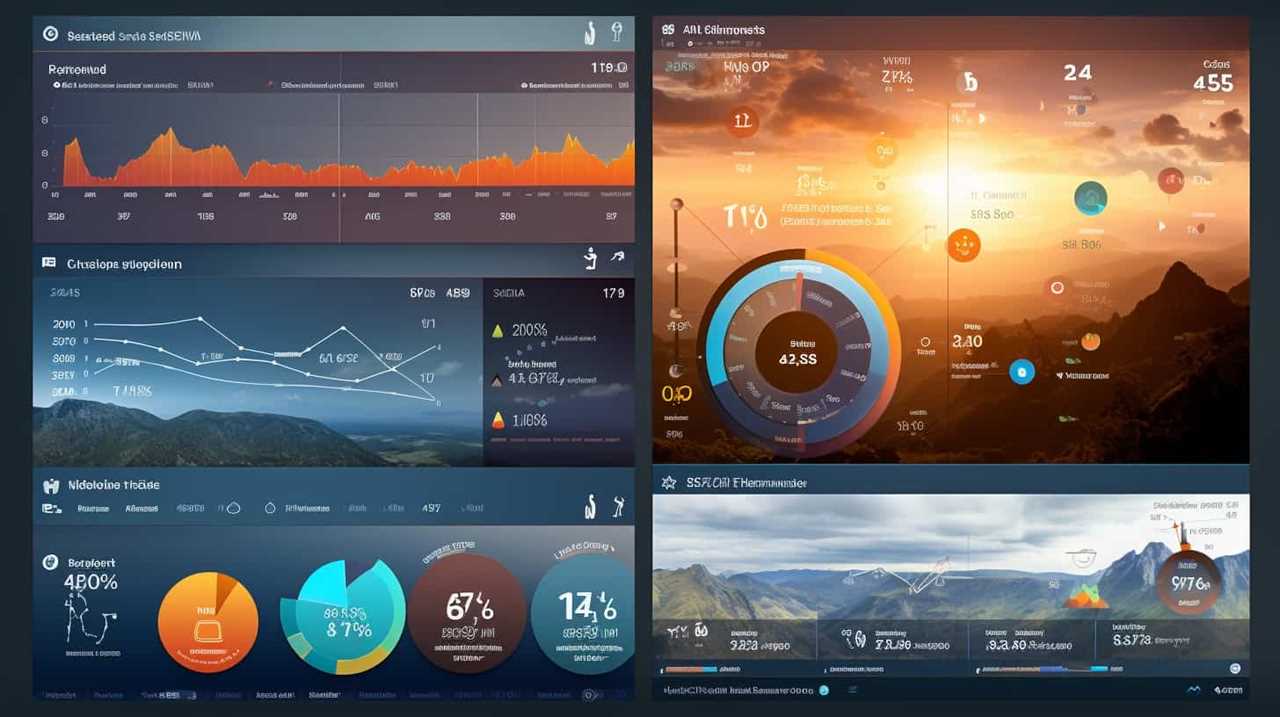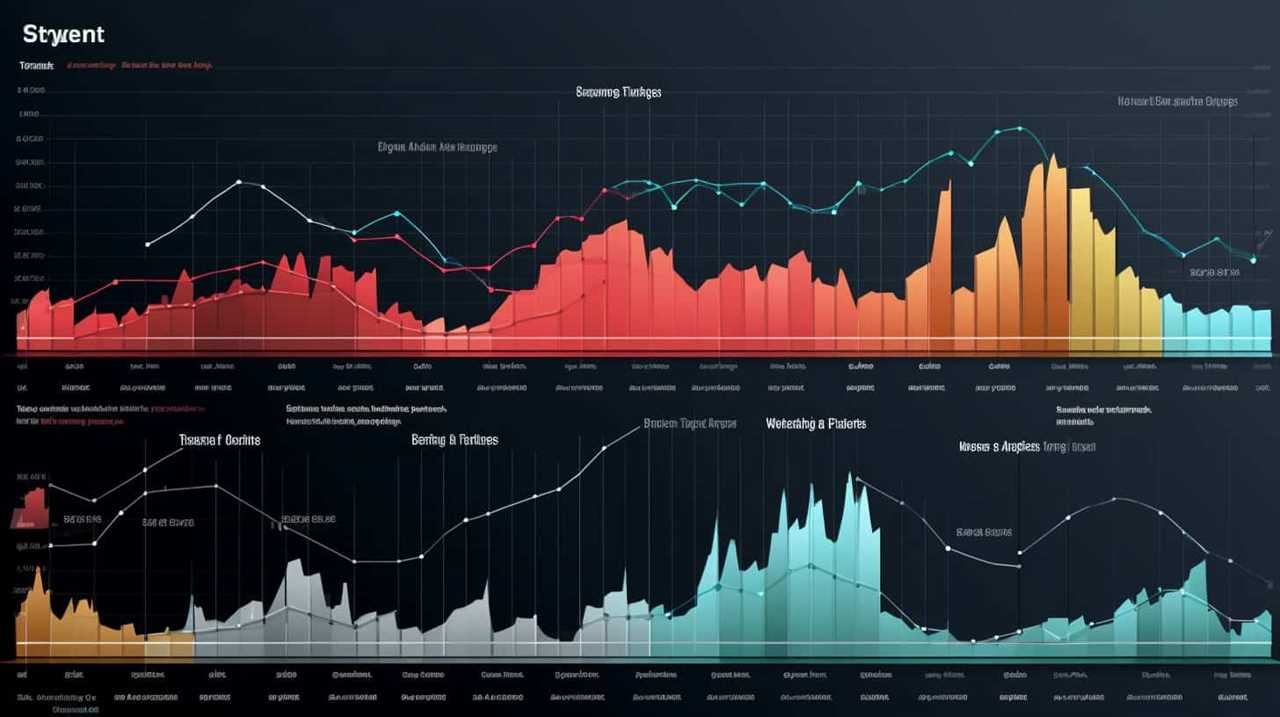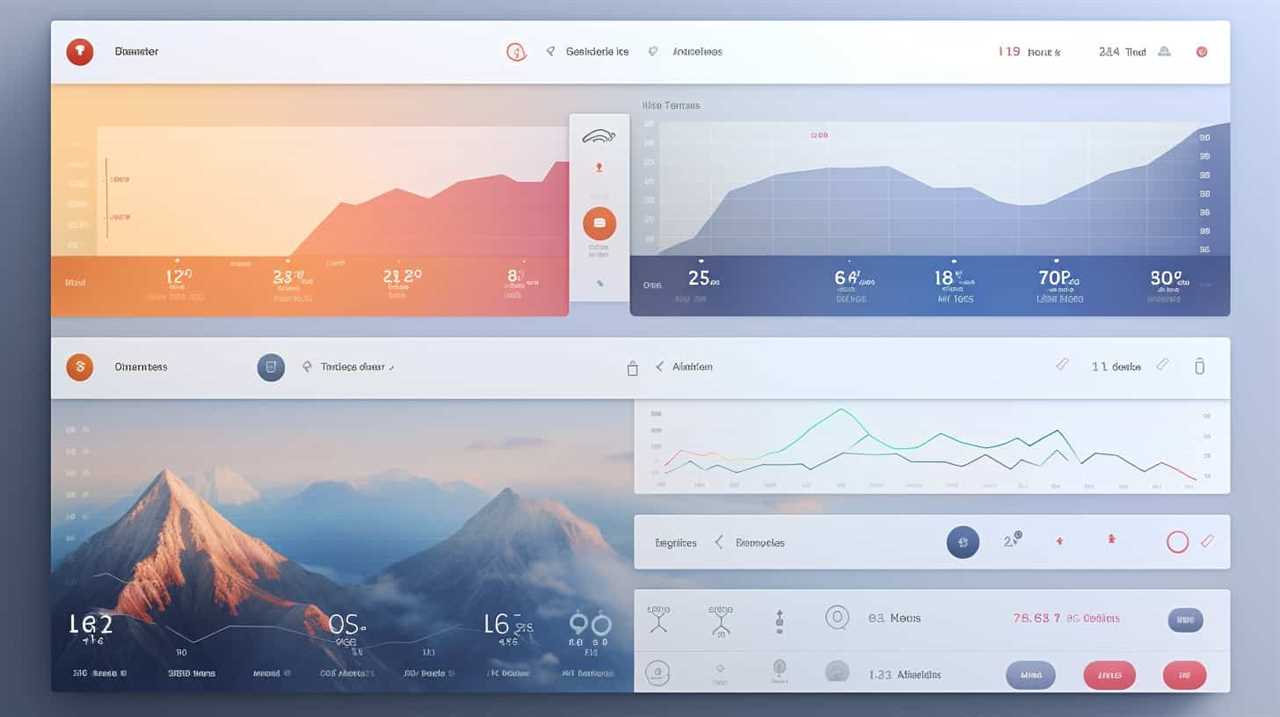Are you ready to become an expert in managing your online presence?
In this article, we’ll delve into the captivating realm of SEO and SCO.
Discover the key differences between these two powerful strategies and uncover the importance of keywords in enhancing your online presence.
We’ll explore effective on-page optimization techniques and off-page factors that play a vital role in boosting your visibility.

Join us as we unravel the metrics for measuring success and learn how to integrate SEO and SCO for a comprehensive digital strategy.
Let’s embark on this journey together!
Key Takeaways
- SEO focuses on optimizing website content for search engine visibility and ranking.
- SCO aims to create shareable and engaging content to improve visibility and rank higher in search engine results pages.
- Keywords play a crucial role in driving organic traffic and improving search engine rankings in both SEO and SCO.
- Social media engagement and advertising are important tactics in both SEO and SCO to boost visibility and drive traffic.
What Is SEO
SEO, short for search engine optimization, is the process of improving a website’s visibility and ranking on search engine results pages. As a small business, it’s crucial to understand the importance of SEO in today’s digital landscape.
With traditional marketing strategies becoming less effective, optimizing your website for search engines is essential for driving organic traffic and increasing online visibility. Unlike traditional marketing, which relies on costly advertisements and promotions, SEO focuses on improving website content, user experience, and technical aspects to attract and engage potential customers.

By implementing effective SEO strategies, small businesses can compete with larger competitors on search engine results pages, reaching a wider audience and driving targeted traffic to their websites.
In short, SEO offers small businesses a cost-effective and sustainable marketing approach compared to traditional marketing strategies.
What Is SCO
When it comes to digital marketing, another important concept to consider is SCO, which stands for search content optimization.
SCO refers to the practice of optimizing the content on your website to improve its visibility and rank higher in search engine results pages (SERPs). This is different from traditional marketing methods because it focuses on targeting specific keywords and phrases that users are searching for.

By strategically incorporating these keywords into your content, you can increase your website’s organic traffic and attract more potential customers. The benefits of SCO are numerous.
Not only does it help improve your website’s visibility, but it also enhances user experience, increases brand exposure, and ultimately leads to higher conversion rates.
In comparison to traditional marketing, SCO is a cost-effective and long-term strategy that can deliver consistent results.
Key Differences Between SEO and SCO
As we delve into the key differences between SEO and SCO, it’s crucial to grasp the distinct approaches these strategies take in optimizing website content for search engine visibility and user engagement.

One significant difference lies in the importance of content. SEO places a heavy emphasis on high-quality, relevant content that’s optimized with targeted keywords to attract organic traffic.
On the other hand, SCO focuses on creating content that’s shareable and engaging, with the goal of increasing social media visibility and generating buzz.
Another difference is in optimizing for voice search. While SEO focuses on traditional text-based search queries, SCO takes into account the rising popularity of voice assistants and tailors content to match the natural language used in voice searches.
Understanding these distinctions is vital for effectively implementing either strategy and achieving desired results.

Importance of Keywords in SEO and SCO
When it comes to SEO and SCO, keywords play a crucial role in driving organic traffic and improving search engine rankings. Effective keyword research strategies help us identify the most relevant and high-performing keywords for our content.
Understanding the differences in SEO and SCO tactics allows us to optimize our keywords strategically, ensuring that our content aligns with both search engine algorithms and user intent.
Ultimately, the impact of keywords can’t be underestimated in the world of SEO and SCO, as they serve as the foundation for successful online visibility and engagement.
Keyword Research Strategies
While conducting keyword research, we discovered the crucial role that keywords play in both SEO and SCO. Keyword analysis allows us to identify the most relevant and high-performing keywords for our website, ensuring that our content is optimized for search engines.

Similarly, competitor research helps us understand the keywords our competitors are targeting, allowing us to stay ahead in the competitive landscape. Here are four strategies that highlight the importance of keywords in SEO and SCO:
- Long-tail keywords: Targeting specific, longer phrases can attract highly targeted traffic and increase conversion rates.
- Keyword mapping: Aligning keywords with relevant web pages helps search engines understand the content and rank it accordingly.
- Keyword optimization: Strategically incorporating keywords in page titles, meta descriptions, headers, and content improves visibility in search results.
- Tracking keyword performance: Regularly monitoring keyword rankings and making adjustments ensures continuous optimization for better search engine rankings.
SEO Vs. SCO Tactics
To understand the importance of keywords in SEO and SCO tactics, we continue the discussion from the previous subtopic by exploring their role in driving organic traffic and improving search engine visibility. Keyword targeting and content optimization are key strategies in both SEO and SCO. By targeting relevant keywords in your website content, you increase the chances of your website being ranked higher in search engine results pages (SERPs). This leads to increased visibility and more organic traffic to your site. Content optimization involves creating high-quality, keyword-rich content that is relevant to your target audience. This not only helps in improving search engine rankings but also enhances the user experience, increasing the likelihood of conversions. The table below summarizes the importance of keyword targeting and content optimization in both SEO and SCO tactics.
| SEO Tactics | SCO Tactics |
|---|---|
| Keyword research and analysis | Optimizing social media profiles |
| On-page optimization | Creating engaging social media content |
| Off-page optimization | Utilizing social media ads |
| Technical SEO | Monitoring and analyzing social media metrics |
Impact of Keywords
Keywords play a crucial role in driving organic traffic and improving search engine visibility in both SEO and SCO tactics. When it comes to the impact of keywords, there are several key factors to consider:
- Keyword density: The frequency of keywords used in a piece of content affects its visibility and relevance to search engines. Striking the right balance is essential to avoid keyword stuffing and maintain readability.
- Optimizing meta tags: Meta tags, such as the title tag and meta description, provide information to search engines about the content of a webpage. Including relevant keywords in these tags can significantly impact search engine rankings.
- Targeting long-tail keywords: Long-tail keywords are more specific and have lower competition. By focusing on these keywords, businesses can attract more targeted traffic and increase their chances of conversion.
- Keyword research: Conducting thorough keyword research helps identify the most relevant and popular terms related to a business. This knowledge allows for strategic optimization of content and improved visibility in search engine results pages.
On-Page Optimization Techniques for SEO and SCO
When it comes to optimizing webpages for better search engine ranking, we employ various on-page techniques for both SEO and SCO. On-page optimization strategies play a crucial role in improving a website’s visibility and organic traffic. One important aspect is keyword density, which refers to the frequency and placement of keywords within the content. By strategically incorporating relevant keywords, we can signal to search engines the relevance and quality of our webpages. Additionally, optimizing meta tags, headings, and URLs can enhance the overall SEO performance. On the other hand, for SCO (Searcher Controlled Optimization), user experience and engagement metrics are prioritized. This includes optimizing page load speed, mobile responsiveness, and providing valuable and easily accessible information to the users.

| On-Page SEO | On-Page SCO |
|---|---|
| Keyword density | User experience |
| Meta tags optimization | Page load speed |
| Headings optimization | Mobile responsiveness |
| URLs optimization | Valuable information |
| Internal linking | Easy navigation |
| Image optimization | Engaging content |
Off-Page Factors in SEO and SCO
When it comes to off-page factors in SEO and SCO, two points that stand out are the importance of backlink quality and the impact of social media.
Quality backlinks from authoritative websites can greatly enhance search engine rankings, while social media signals such as likes, shares, and comments can also play a significant role in improving visibility.
Backlink Quality Importance
We believe that the quality of backlinks plays a crucial role in the off-page factors of both SEO and SCO. Backlinks aren’t just about quantity; they should also be high-quality and relevant to your website’s niche.
Here are four reasons why backlink quality is important:

- Authority: High-quality backlinks from authoritative websites can boost your website’s credibility and authority in the eyes of search engines.
- Relevance: Backlinks from websites that are relevant to your industry or niche are more valuable as they indicate to search engines that your website is a reliable source of information.
- Competitor Analysis: Analyzing your competitors’ backlinks can help you identify high-quality sources for your own backlink outreach efforts.
- Natural Link Profile: Building a diverse and natural link profile with high-quality backlinks can help search engines understand the relevance and value of your website.
With the importance of backlink quality established, let’s explore the next topic: the impact of social media on SEO and SCO.
Social Media Impact
Now let’s delve into the impact of social media on SEO and SCO, specifically in terms of off-page factors.
Social media engagement plays a crucial role in boosting SEO and SCO efforts. When users engage with your content on social media platforms, it indicates relevance and popularity to search engines. This can lead to higher rankings in search results.
Additionally, social media advertising allows you to reach a wider audience and drive traffic to your website, which can positively impact your search rankings. By utilizing social media effectively, you can increase brand visibility, generate backlinks, and improve your overall online presence.

Understanding the correlation between social media and SEO/SCO is essential for success in the digital landscape.
Now, let’s explore the metrics that help measure the success of SEO and SCO strategies.
Measuring Success: Metrics for SEO and SCO
To evaluate the effectiveness of SEO and SCO strategies, it’s crucial to analyze relevant metrics. Tracking performance through keyword analysis and other metrics allows us to measure the success of our SEO and SCO efforts.
Here are four key metrics to consider:

- Organic search traffic: This metric measures the number of visitors who found your website through search engine results. It indicates the visibility and reach of your SEO strategy.
- Conversion rate: This metric measures the percentage of visitors who complete a desired action, such as making a purchase or filling out a form. It helps evaluate the effectiveness of your website’s design and content.
- Bounce rate: This metric measures the percentage of visitors who leave your website after viewing only one page. A high bounce rate may indicate a need for improvement in user experience or content relevance.
- Backlinks: This metric measures the number and quality of other websites linking to your site. It helps assess the authority and credibility of your website.
Integrating SEO and SCO for a Comprehensive Strategy
As we delve into integrating SEO and SCO for a comprehensive strategy, it’s important to consider the benefits of combining these two approaches.
By integrating SEO and SCO, businesses can optimize website performance and achieve higher visibility in search engine results. SEO focuses on optimizing website content, keywords, and meta tags to improve organic search rankings. On the other hand, SCO emphasizes optimizing the website’s technical aspects, such as site speed, mobile-friendliness, and user experience.
By combining the two, businesses can create a holistic strategy that not only drives organic traffic but also enhances the overall performance of their website. This comprehensive approach ensures that businesses are maximizing their online presence and reaching their target audience effectively.
To succeed in today’s digital landscape, it’s crucial to integrate SEO and SCO for a well-rounded and optimized strategy.

Conclusion: Choosing the Right Approach for Your Business
After considering the benefits of integrating SEO and SCO, businesses should choose the approach that best aligns with their goals and target audience. Evaluating the effectiveness of SEO and SCO strategies is crucial in making this decision. Here are some key factors to consider when choosing the right approach for your business:
- Target audience: Understand your audience and their preferences. Determine whether they’re more likely to respond to SEO techniques or SCO strategies.
- Goals: Clearly define your business goals. Decide whether you want to increase organic traffic through SEO or gain immediate visibility through SCO.
- Budget: Consider your budgetary constraints. SEO may require a longer-term investment, while SCO can provide quicker results but at a potentially higher cost.
- Competitors: Analyze your competition. Identify if they’re using SEO or SCO and determine which approach will give you a competitive edge.
Frequently Asked Questions
How Long Does It Take to See Results From SEO and SCO Efforts?
When it comes to measuring the effectiveness of SEO and SCO efforts, one question we often come across is how long it takes to see results.
Without the context of SEO vs SCO, it’s important to note that the timeframe for seeing results can vary depending on various factors such as competition, website optimization, and content quality.
However, with proper implementation and continuous monitoring, both SEO and SCO can yield positive results and improve your online presence over time.

Can SEO and SCO Be Used Together to Maximize Online Visibility?
Combining SEO and SCO techniques can help maximize online visibility. By implementing effective SEO and SCO strategies, we can ensure that our website ranks higher in search engine results and attracts more organic traffic.
This powerful combination allows us to target both search engine optimization and social media optimization, increasing our chances of reaching a wider audience and driving more conversions.
Are There Any Risks or Pitfalls to Be Aware of When Implementing SEO or SCO Strategies?
When implementing SEO or SCO strategies, there are risks and challenges to be aware of. It’s important to avoid common mistakes in SEO and SCO implementations. These can include keyword stuffing, poor website design, and not keeping up with algorithm updates.
What Are the Costs Associated With Implementing SEO and SCO Techniques?
When it comes to the costs of implementing SEO and SCO techniques, we need to consider a cost comparison and ROI analysis.

Understanding the expenses involved is crucial for strategic decision-making. We must assess the financial investment required for optimization efforts and weigh it against the potential returns.
How Do Search Engines Determine the Ranking of Websites in SEO and Sco?
Determining factors for search engine rankings include relevance, authority, and user experience. Search engines use complex algorithms to evaluate websites based on these factors. Algorithm updates play a crucial role in refining these rankings.
Understanding these determining factors and staying updated with algorithm updates is essential for achieving high rankings in both SEO and SCO. By optimizing our website’s relevance, authority, and user experience, we can improve our chances of ranking higher on search engine result pages.
Conclusion
In conclusion, after carefully investigating the differences between SEO and SCO, it’s clear that both approaches are crucial for a comprehensive digital marketing strategy.

While SEO focuses on optimizing websites for search engines, SCO emphasizes the importance of social media and online communities.
By integrating both approaches, businesses can effectively target their audience and increase their online visibility.
It’s essential to continuously measure success using relevant metrics and adapt strategies accordingly.
Ultimately, choosing the right approach depends on the specific goals and needs of each business.











